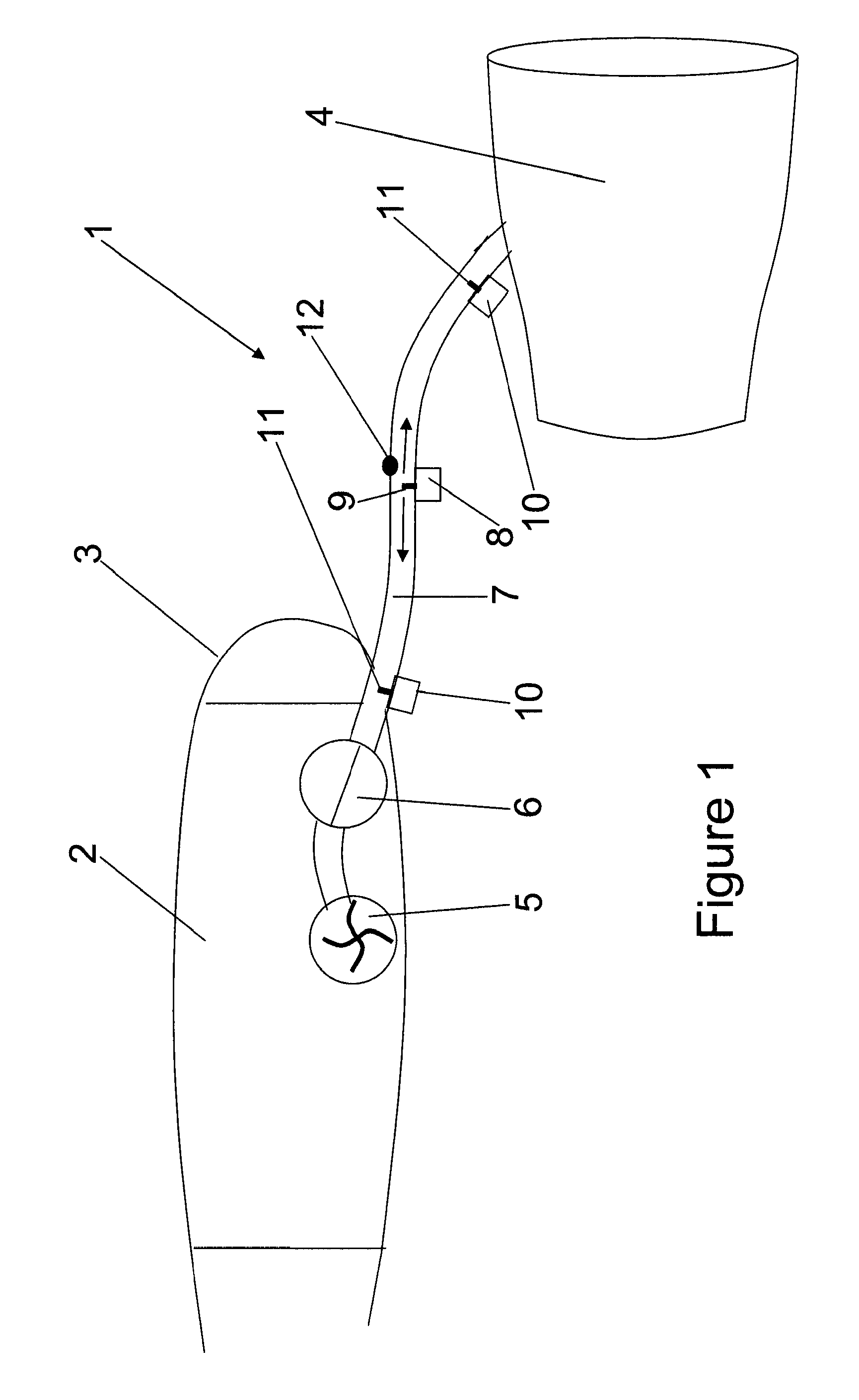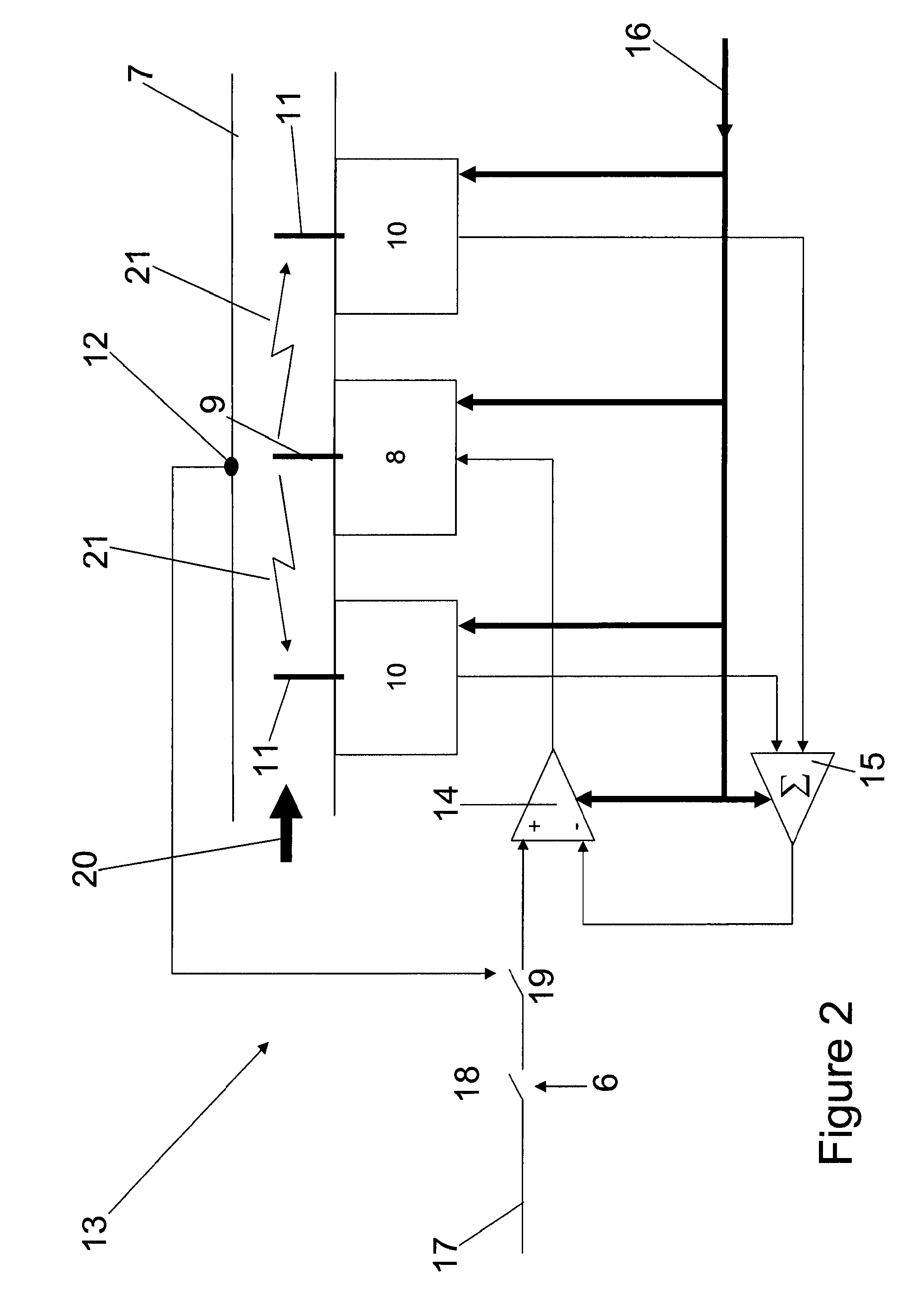Aircraft fuel system
a fuel system and aircraft technology, applied in the direction of power plant fuel tanks, de-icing equipment, transportation and packaging, etc., can solve the problems of limited heat transfer rate, unsatisfactory heating, and clear safety issues, so as to reduce the ice formation in the fuel line, the effect of constant receiving power level and maximum system efficiency
- Summary
- Abstract
- Description
- Claims
- Application Information
AI Technical Summary
Benefits of technology
Problems solved by technology
Method used
Image
Examples
Embodiment Construction
)
[0020]FIG. 1 shows an aircraft fuel system 1 for supplying liquid fuel from a fuel tank 2 in the aircraft wing 3 to a jet engine 4. The fuel system 1 includes a fuel pump 5 installed in the tank 2, a low pressure valve 6 (shown in its open position in FIG. 1) and a fuel line 7. The fuel line 7 supplies liquid fuel from the tank 2 to the engine 4. The engine 4 is mounted from the aircraft wing 3 by a pylon (not shown) of conventional type and the fuel line 7 passes through the pylon. The above described features of the fuel system 1 are entirely conventional.
[0021]As can be seen from FIG. 1, the fuel system 1 further includes a microwave transmitter 8 having a dipole antenna 9 disposed within the fuel line 7. At each end of the fuel line 7 (between the valve 6 and the engine 4) is disposed a microwave receiver 10 having a dipole antenna 11 inside the fuel line 7. Mounted in the wall of the fuel line 7 is a temperature sensor 12. The transmitter 8, receivers 10 and sensor 12 are conn...
PUM
 Login to View More
Login to View More Abstract
Description
Claims
Application Information
 Login to View More
Login to View More - R&D
- Intellectual Property
- Life Sciences
- Materials
- Tech Scout
- Unparalleled Data Quality
- Higher Quality Content
- 60% Fewer Hallucinations
Browse by: Latest US Patents, China's latest patents, Technical Efficacy Thesaurus, Application Domain, Technology Topic, Popular Technical Reports.
© 2025 PatSnap. All rights reserved.Legal|Privacy policy|Modern Slavery Act Transparency Statement|Sitemap|About US| Contact US: help@patsnap.com



